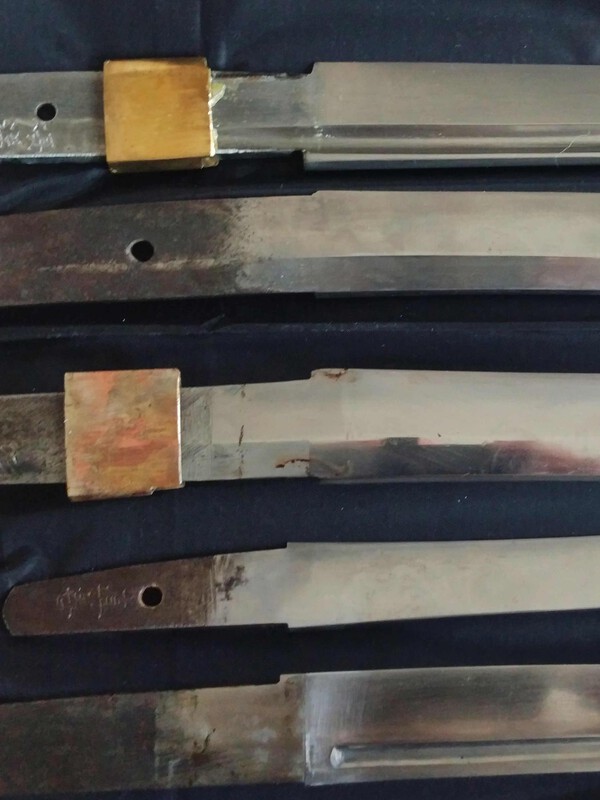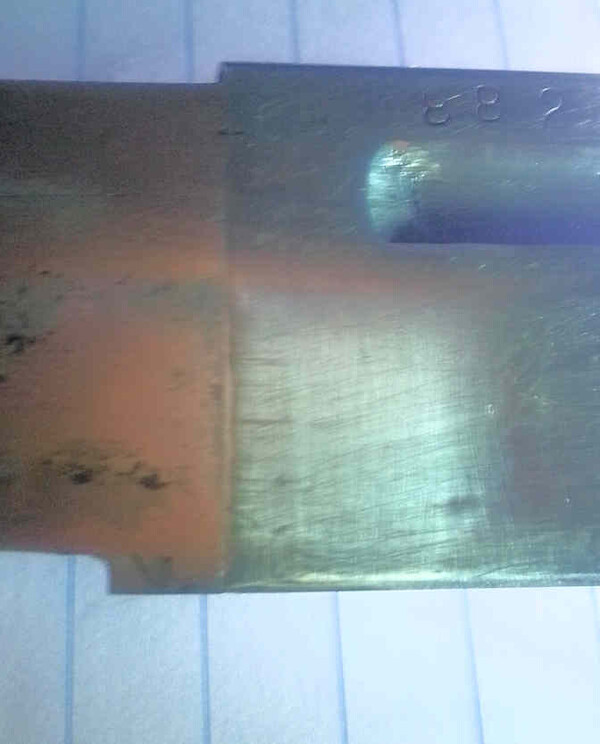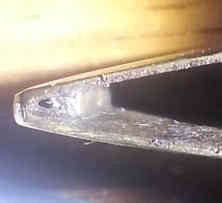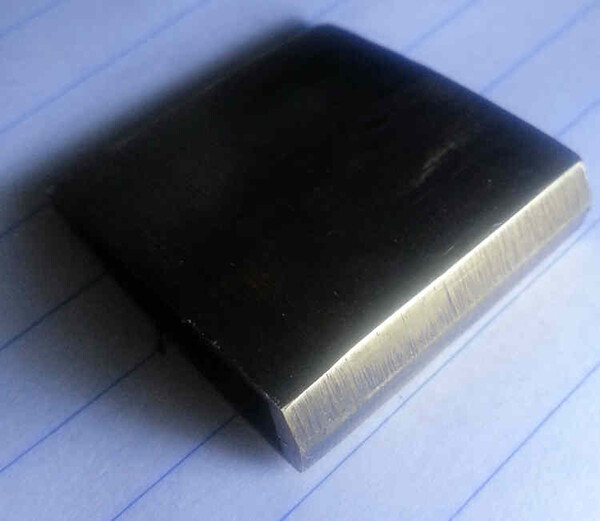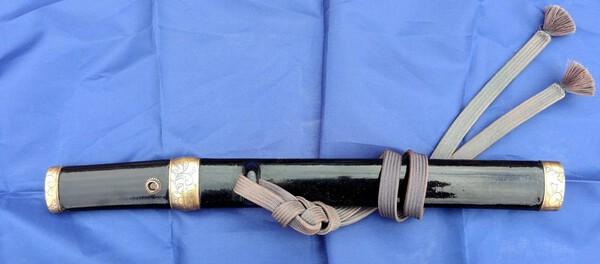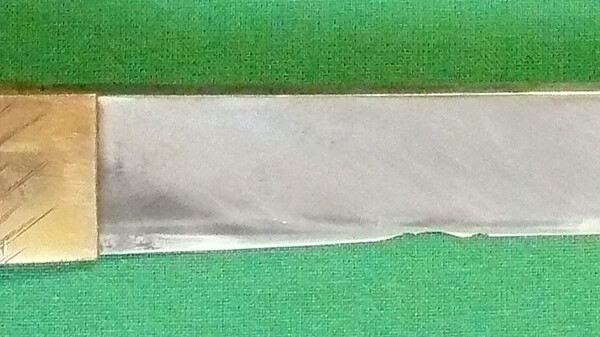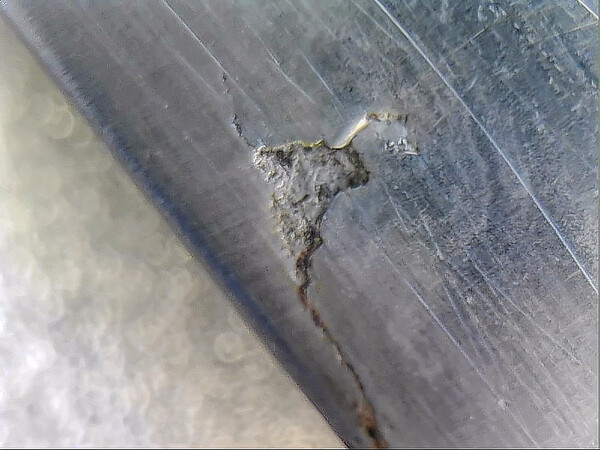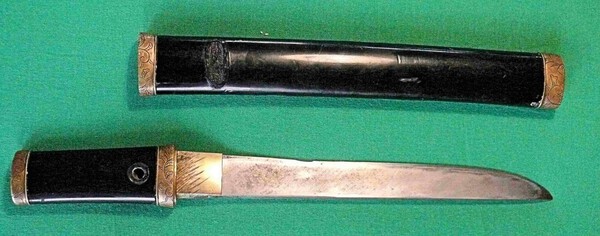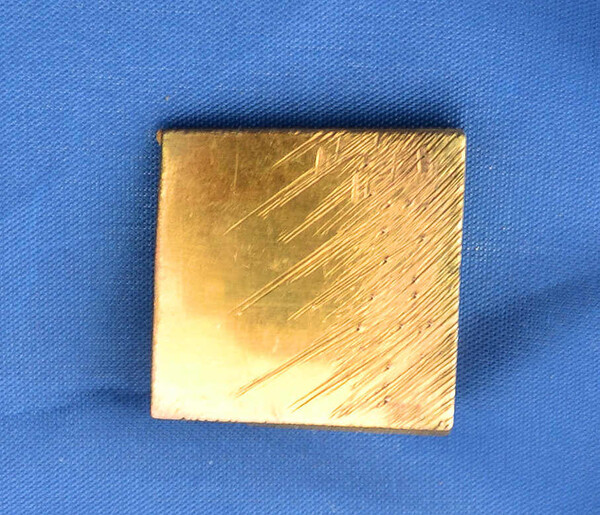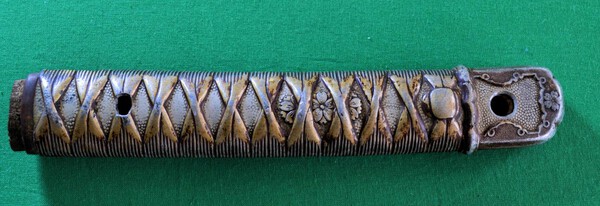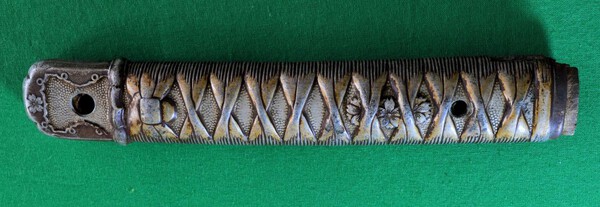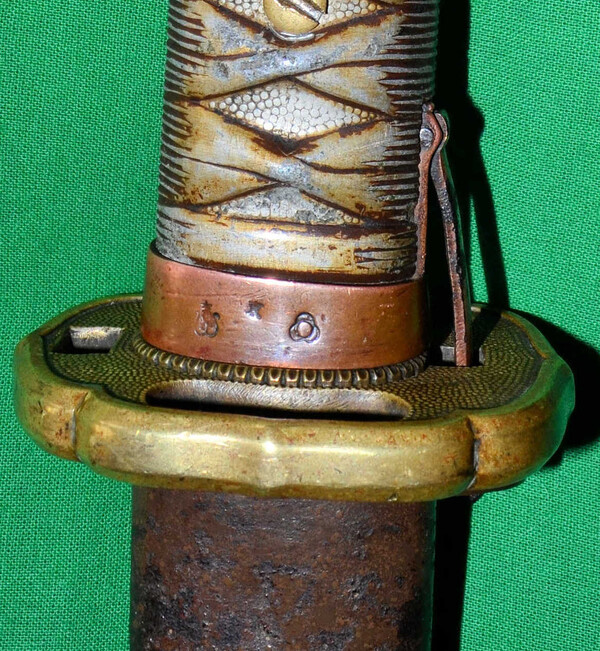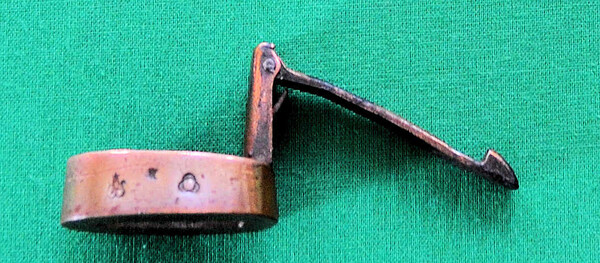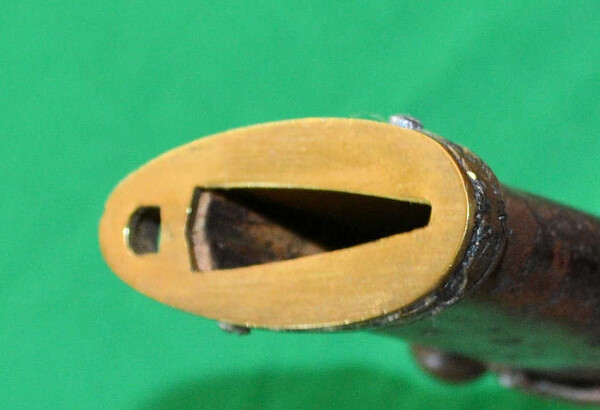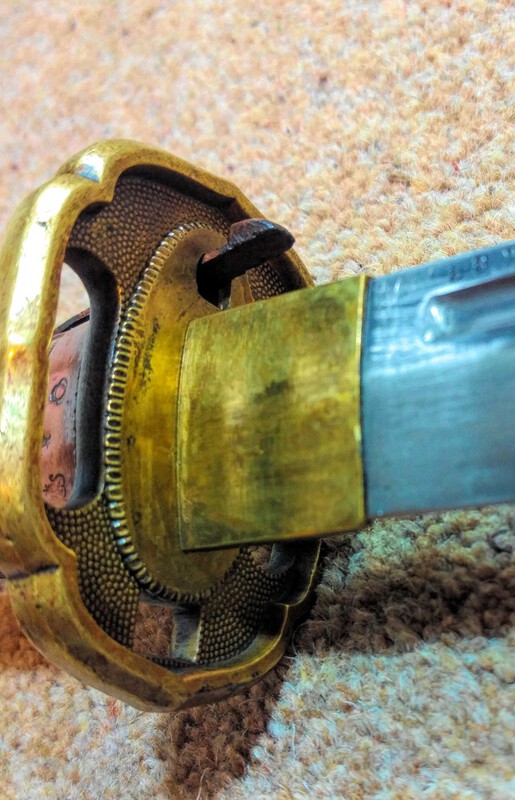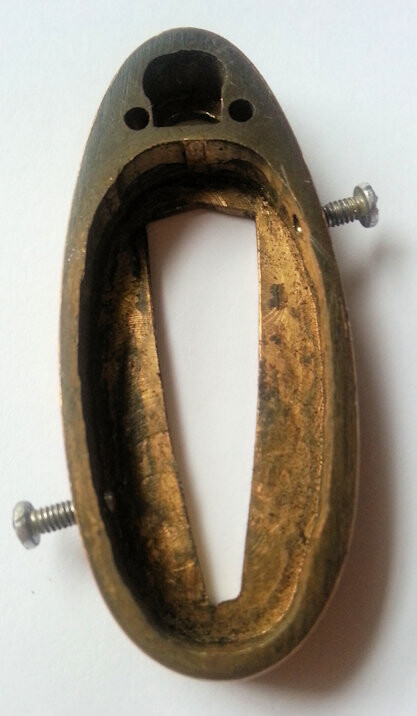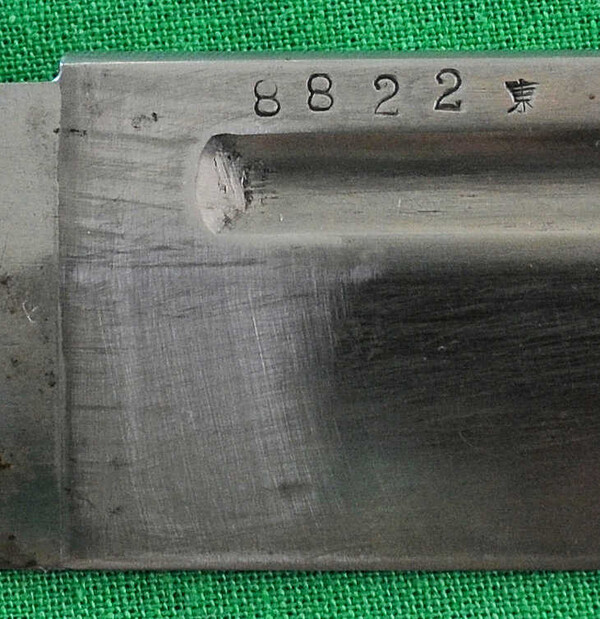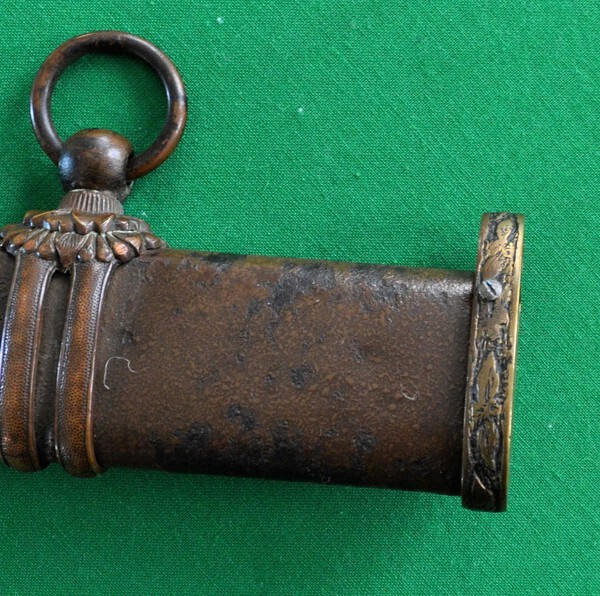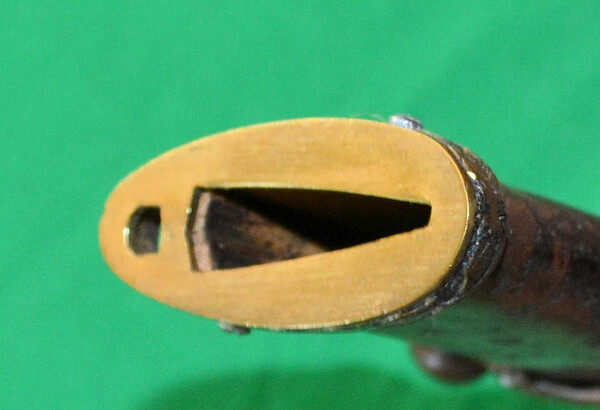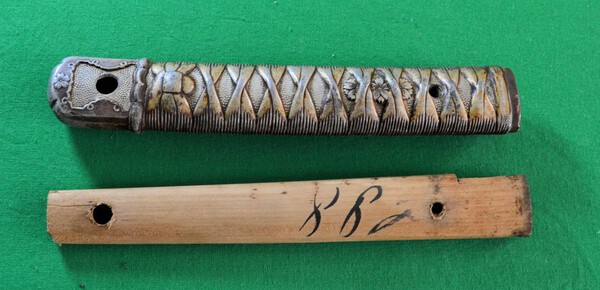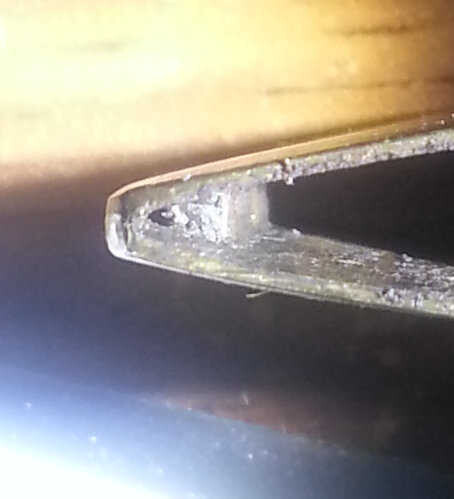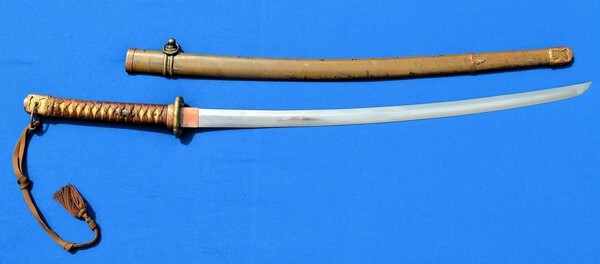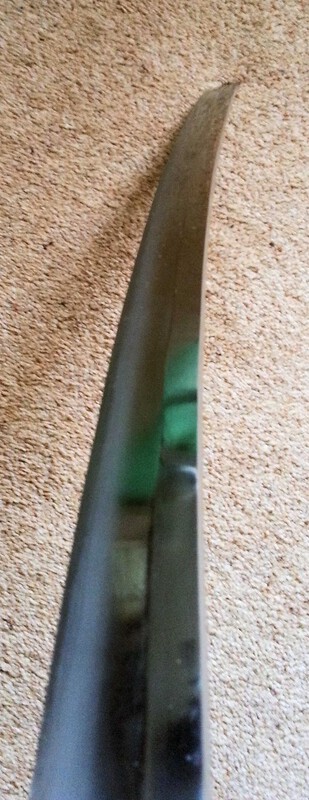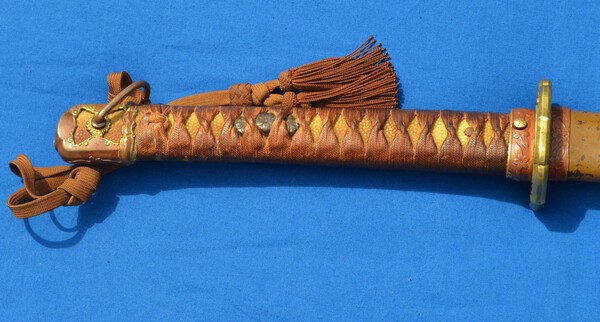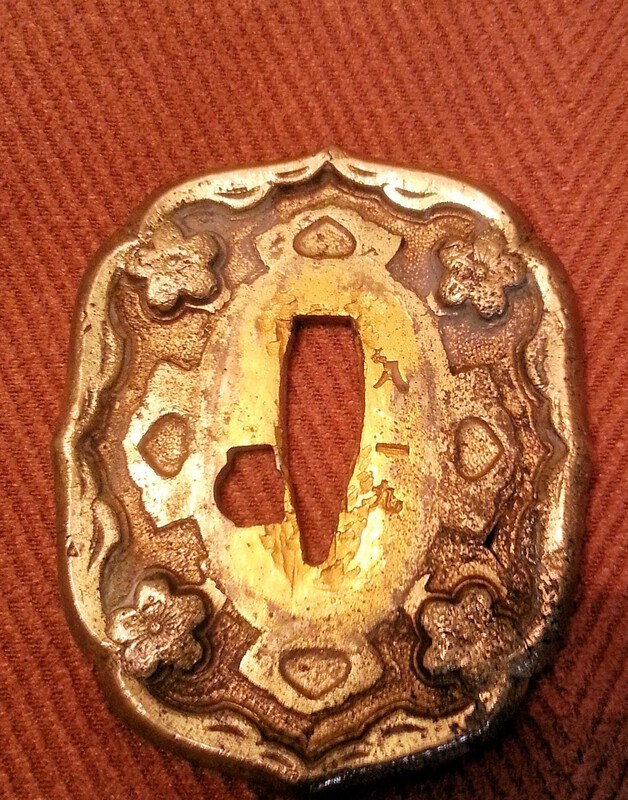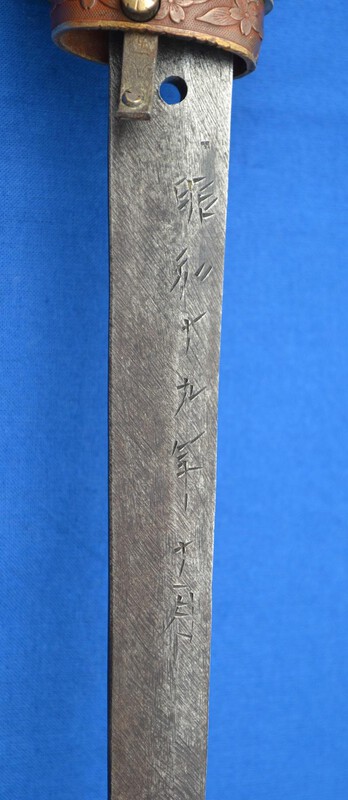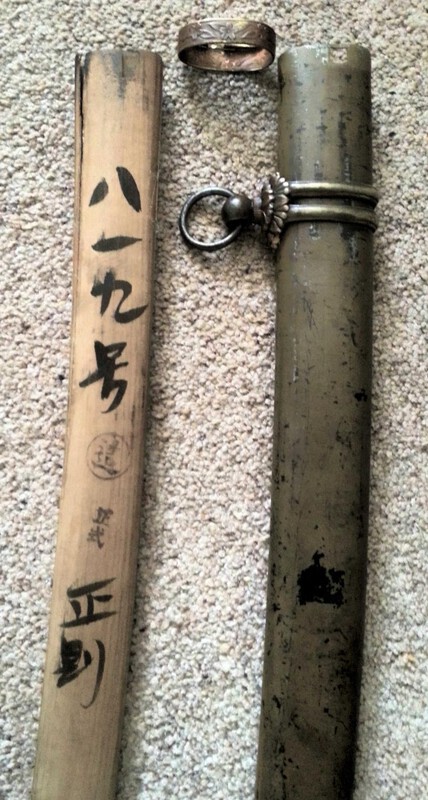-
Posts
13 -
Joined
-
Last visited
About GuyC
- Birthday 02/21/1954
Profile Information
-
Gender
Male
-
Location:
Rugby, UK
-
Interests
Swords, computing, photography
Profile Fields
-
Name
David C
Recent Profile Visitors
319 profile views
GuyC's Achievements
-
GuyC started following Fraud Help
-
Jean Thanks for the advice, it's not so much excitement as I have had the blade for several years. I have a few poor quality Nihonto that I am keen to find out more about. I do need to slow down but I always want to rush to the next blade as soon as I have dealt the last one. I haven't been a member long and I have already fired three swords at the forum and received top class information back in return I will not be disappointed to learn they are gimei or have flaws, for the money I paid I would not expect anything more. I am keen to get information and opinions about them to better place them in their historical context.
-
Just been going through the original documentation I got when I purchased this several years ago and found this: Naoyoshi 直吉, 1818-1865, Mikawa, Son of the 6th generation Mishina Naomichi was born in Owari. Also used the name of Naoyoshi, 直義. Student of Hamabe Toshizane 寿実 and Taikei Naotane 大慶直胤. Early works are Hamabe style kiku-choji midare and later ones are gunome midare with nie. Does this make any more sense?
-
Please excuse my appalling ignorance but I am not well versed in reading Kanji. (Understatement ) Could this be interpreted as Yoshinao. Seems the wrong way round but it is the only way I can get a recognised name out of 善直
-
Much relieved thank you. I must admit I belong to the "If it can come apart then take it apart school" Anyway here is comparison shot for any who are interested. Top to bottom: Cheap Chinatana, ha-machi ahead of mune-machi Nihonto katana, machi level (mune-machi not very deep and ha-machi worn) Officers Type 98, machi level Nihonto tanto machi level NCO type 95, mune-machi ahead of ha-machi
-
Thank you to everybody who has contributed, it has been invaluable In summary: A good early type 95 with tsuka following the pattern of the earlier copper hilts. The consensus is that it is genuine. The saya is more problematic, could be an authentic example of an officer saya adapted to an NCO blade, could be a field repair or adaptation or could be post-war amalgamation of bits to replace a missing saya. I am happy with all of that which makes me a little nervous to raise something that hasn't been addressed specifically. The misalignment of the ha and mune-machi. As stated I have seen this on Chinese blades combined with a habaki that either just butts up against the ha-machi or is split at the bottom to allow the ha-mach to slide a little way into the habaki. This sword, however, has a properly contructed habaki including machigane but lacking the usual mune-mach notch. The mune-machi notch is usually seen on both cheap Chinese, and authentic Japanese habaki Why would a forger go to the trouble of contructing a properly formed but unusual habaki to put on a blade with an obvious error? A cheap generic habaki would have looked more usual ( and authentic ) to the casual viewer.The rest of the blade looks good as people have pointed out, correct terminations of the bohi, good shape, good stamps and serial number. Is this a game changer? Is this a feature sometimes seen on authentic blades? So a conundrum, I await opinions with a good deal of trepidation.
-
First a disclaimer. I bought this when I started collecting swords before I settled on European Military as my main area of interest. I didn’t know much but wanted some real Nihonto. This didn’t cost a lot so I accepted poor quality as long as it was a traditional blade. This had a huge chip in the edge and as I lacked appreciation of Japanese swords I polished it out. I know better now. Please feel free to criticise my actions but be aware I now understand my transgressions. That out of the way what can people tell me about this tanto? Signed Naoyoshi ( 1818-1865 Mikawa, Son of the 6th generation Mishina Naomichi?) Original sellers description: Shinshinto tanto in nice koshirae signed Naoyoshi Signed tanto Nagasa: 23cm Nakago: 1mekugi-ana, Mei: Naoyoshi Hamon: Sughua Hada: itame Boshi: komaru Sugata: hira sukuri Blade in bad polish there are no fatal damages, nice matching koshirae, kashira, guchi and saya all with cherry blossom, all in all a nice tanto that will polish out nicely. Naoyoshi was active in shinshinto era and is mentioned in the Nihonto Kozan. My stats: Nagasa 8” (20.3 cm) Measured to Mune Machi Nakago 3” (7.5 cm) Mihaba (Blade Width) at Machi 0.93” (23.7mm), mid blade 0.79” (20.1mm), 2 inches from tip 0.77” (19.7mm) Kasane (Blade Thickness) at Machi 0.27” (6.9mm), mid blade 0.24”(6.1mm), 2 inches from tip 0.23” (5.9mm) Blade weight 4.9oz (140gm) The blade had a large chip on edge towards mid blade. Did not completely destroy hamon so polished out. Hamon very narrow. One flaw on edge on one side of the blade but does not go through to the other side. Some activity in the blade but the hada which seems to have a wave pattern is difficult to see or photograph. (I have done my best with a usb microscope)There is a very narrow Suguha hamon Scratch pattern gilt habaki. Sageo is modern silk addition. I like this tanto so I don't mind if I'm told it is worthless or ruined, I will be keeping it as an example of a genuine Nihonto (I hope) Pics with green background are the blade as purchased.
-
Just to point out that the Kuchi-gane is not painted at all. False colour given by my trying to make the pictures as clear as possible I think. Apologies if that has been misleading people. It is unpainted patinated brass with a lot of dirt in the crevices. I agree the screws do look bright although steel not aluminium.
-
Shamsy You will certainly have first option , but I'm afraid I don't often sell swords, my wife says I'm too much of a hoarder. I prefer discerning collector myself. Thank you for some really interesting information.. I had no idea about the arrangement of the ito. I am putting up some more pictures to further illustrate what you have pointed out. If I still had the brains I was born with I would have posted these straight away and given everybody a fighting chance of identifying the peculiarities of this sword.
-
No rattle at all, everything is tight and well fitted. That is what lead me down the road of looking to see if genuine Type 95s were ever put in mismatched saya. I think we have to say that opinion is divided on this sword. I have handled obvious Chinese fakes and this doesn't seem to be one of those, but I agree it does have issues. Whether you think those issues add to the story of the sword or detract from it is an issue for debate. Thank you to all who have replied so far.
-
Steve I hope these help. Obviously, I will be disappointed if it is an out and out fake. The Chinese know what a Type 95 saya looks like so why create an Officer hybrid, and add doubt to what would otherwise have been a pretty convincing forgery? It is also the only Chinese fake habaki I have seenthat seems to have been properly constructed and fitted to the blade.
-
Thought I'd throw in another sword with puzzling characteristics for my 2nd post. On the face of it a standard Type 95 but with some strange issues. To start Original catalogue entry from auction house: Japanese NCO's Alloy Hilted Shin-Gunto Sword. 271/2 inch single edged blade with narrow rear fuller. Rear serial number ''8822''.Brass tsuba. Copper ferrule (fuchi)with armoury stamp. One piece alloy grip with false binding and pommel with floral decoration. Contained in its khaki brown painted steel scabbard with darkened brass floral decorated mounts. Minor dents to scabbard. Some service wear. My stats: Weight: sword only 2lb 4oz (1.02kg), with scabbard: 3lb 3oz (1.44kg) Length overall: 36'' (92cm) Blade: 26.25'' (66.25cm) tip to mune-machi Sori about 0.6'' (1.6 cm) POB: 5.5'' (14cm) from tsuba. Profile taper 1.14'' (29.1mm) in front of habaki, 1.02'' (26mm)at mid blade, 0.81'' (20.7mm) 2 inches from tip. Distal taper 0.27'' (6.9mm) in front of habaki, 0.23'' (5.9mm)at mid blade, 0.18'' (4.8mm) 2 inches from tip. Tsuba 2.89'' (73.5mm) by 2.31''(58.6mm), 0.35'' (9mm) thick No discernible hamon on blade which is machine made. Serial number 8822 at rear side of blade together with a stamp for Tokyo. Nakago is unsigned and has no stamps only slight file marks. Copper Fuchi is marked with stamps Suya, Tokyo and Kokura. The tsuka is worn , false same is painted a faded dirty white while some dark brown paint remains on the false ito but mostly it has worn down to a paler undercoat or to bare metal. 1st puzzle; look at the saya... it is an officer pattern but fitted to receive the NCO pattern lock. The saya fits exactly and does not appear to be a latter lash up/replacement. In my research I found this information: This article by Nick Komia http://www.warrelics.eu/forum/Japanese-militaria/deflating-another-myth-type-3-army-officer-s-sword-expanded-version-584796/ ''1937 Officers had to make do with Type 95 NCO swords due to a worsening shortage The only shortage problem that Ohmura-san’s site refers to is the long ago case of 1931/32 when shortages of officer swords required the arsenal to sell prototype type 91 NCO swords to officers. He failed to notice that by 1937 new officers found that they could not get hold of any swords to complete their outfits as per regulations. So in desperation, they turned to the arsenal, asking that they be allowed to purchase the Type 95 NCO swords as a substitute. On 29th July 1937, their request was granted and it was agreed to let them buy Type 95s at a price of 33 Yen a piece. They were to fill in the private purchase application forms as provided in the July 1937 memo and apply to Kokura or the Tokyo Arsenal directly with the money. Not only officers in the field, but also vets back home were allowed to buy these NCO swords. The army thus ended up with many officers equipped with the wrong swords. '' Would the the serial number would seem to fit a sword produced around 1937-8? 2nd puzzle The ha and mune machi do not line up. I know this is often the sign of a Chinese fake which allows the use of a cheap habaki. However, the habaki on this sword is properly constructed with a machigane for the ha-machi to but up against, something not normally seen on a Chinese fake. ( I have tried to photograph it but not too successfully) So fake or real?, NCO or Officer making do with an NCO pattern sword? All suggestions and opinions gratefully received.
-
Hello, this is my first post here although I have been a long time sword collector and active on other forums. For my first post I thought I would like to put up a type 98 Shin Gunto from 1944. Some of the information was supplied by members on other forums and I would welcome comments and assessments from people here. Catalogue description when purchased: WW2 period Japanese Army Officer's Sword. A good Showa period example, the blade length of 27 inches. The tang with signatures to both sides. The hilt of military pattern with binding and retaining military mounts. Housed in its original pattern military metal scabbard, this retaining most of the original painted finish. Also complete with officer's sword knot. My statistics: Weight: 2lb 7oz (1.12kg), with saya: 3lb 10ozoz (1.64kg) Length overall: 37'' (94cm) Blade: 27'' (69cm) Sori about 1'' (2.5cm) POB: 6'' (15cm) from tsuba. Profile taper 1.23'' (31.3mm) in front of habaki, 1.06'' (27mm)at mid blade, 0.88'' (22.5mm) 2 inches from tip. Distal taper 0.28'' (7.1mm) in front of habaki, 0.26'' (6.6mm)at mid blade, 0.21'' (5.4mm) 2 inches from tip. Comments and information gleaned elsewhere: White frosted suguha hamon on blade which is more cosmetic than anything as these blades were not traditionally made. No other activity in blade. Nakago is signed/marked on both sides. Also what looks like a small Seki arsenal stamp. Seppa are also marked as is the poor quality tsuba. These are assembly number makings - 819. There is a retaining latch which engages with the saya. Tight brown ito over discoloured same. Single mekugi. Army cherry blossom menuki with gilt worn off. Smith's name Masanori signed on nakago, might be the Masanori listed in Hawley, Mas 753 as a Seki smith in Mino in 1950, although this sword is of course earlier. The other side of nakago translates as 'Showa ju ku nen ju gatsu', - 'Showa 19th year 10th month', - 'October 1944'. The wooden scabbard linings are also marked. These have the same assembly numbers as on the tsuba and seppa '819' and beneath them 'Masanori', so all perfectly matching. The samegawa seems to be celluloid plastic which was used on some wartime swords.The menuki are placed as for a tachi and the mei (signature is correctly placed on the tachi omote side. (outward facing side when worn edge down as a tachi) The sword knot is plain brown which would properly be for a Naval Officer but apparently the Army replaced their blue and brown ones for these as part of late war economy measures. I have a specific question about the same. As stated it appears to be (feels like) cellulose or some other sort of plastic. How common was this ?



